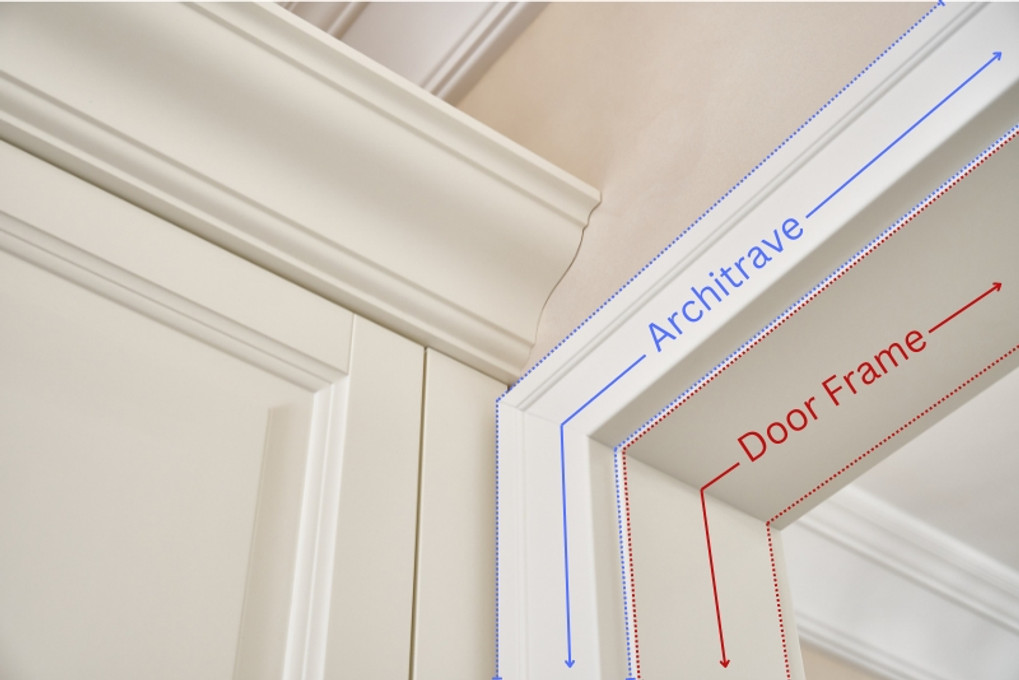Have you ever noticed the decorative trim that frames a doorway? That’s called an architrave, and it’s a design element that often goes unnoticed despite its significant impact on a room’s overall aesthetic. While it might seem like a minor detail, a door architrave serves both practical and decorative functions, elevating a simple opening into a statement of style.
This guide will explain what a door architrave is, explore its many benefits, and show you why it’s a feature worth considering for your home. By understanding its purpose and potential, you can make an informed decision about how this classic architectural element can enhance your living space, adding a layer of sophistication and completeness to your interior design. We will look into the functional advantages, the aesthetic enhancements, and the surprising value it can add to your property.
What Exactly Is a Door Architrave?
A door architrave is a type of interior moulding that is installed around the frame of a doorway. Its primary purpose is to cover the joint between the door casing and the wall, providing a clean, finished appearance. This joint, which is often uneven or contains a small gap, can be an eyesore if left exposed. The architrave conceals this gap, creating a seamless transition from the wall surface to the door frame.
Historically, architraves were prominent features in classical architecture, often ornately carved and elaborate. Today, they are available in a vast array of styles, from sleek and modern profiles to traditional and decorative designs. They are typically made from materials like MDF (Medium-Density Fibreboard), solid wood such as pine or oak, or sometimes plastic. This variety allows homeowners to select an architrave that perfectly complements their home’s decor, whether it’s minimalist and contemporary or rustic and traditional. Essentially, it acts as the final decorative touch that completes the look of a doorway.
The Functional Benefits of a Door Architrave
While often praised for their decorative qualities, door architraves offer several important functional benefits that contribute to the durability and longevity of your home’s interior. These practical advantages make them more than just a pretty feature; they are a crucial component of a well-constructed home.
Concealing Gaps and Imperfections
One of the primary functions of an architrave is to hide the inevitable gaps and imperfections that occur where the door frame meets the plasterboard or wall. During construction, it is nearly impossible to create a perfectly flush join between these two different materials. An architrave neatly covers this junction, providing a smooth and professional finish. This prevents the need for extensive plastering and sanding work to achieve a perfect edge, saving both time and labor costs during installation or renovation. It ensures that the eye is drawn to the beautiful frame rather than to any rough edges or cracks that might otherwise be visible.
Protecting Your Walls from Damage
Doorways are high-traffic areas. People are constantly passing through, often carrying items that can accidentally bump or scrape against the wall edges. The corners around a doorway are particularly vulnerable to knocks, chips, and general wear and tear. A door architrave acts as a protective barrier, absorbing impacts that would otherwise damage the more fragile plaster or paintwork. Made from durable materials like solid wood or dense MDF, architraves are designed to withstand daily use. This protective quality helps maintain the appearance of your walls over the long term, reducing the need for frequent touch-ups and repairs and keeping your home looking pristine for years to come.
Adding Structural Integrity
Although it may seem like a lightweight addition, a door architrave can contribute to the structural integrity of the door frame itself. By bracing the frame against the wall, it helps to reinforce the entire structure, providing additional stability. This can be particularly beneficial in older homes where walls and frames may have shifted over time. The architrave helps to keep the door casing square and secure, ensuring that the door continues to open and close smoothly without catching or jamming. This added support can prevent minor structural issues from escalating into more significant problems, contributing to the overall sturdiness of the doorway assembly.
The Aesthetic Advantages of Using Architraves
Beyond their practical uses, door architraves offer significant aesthetic benefits that can dramatically transform the look and feel of a room. They are a powerful tool in an interior designer’s arsenal for adding character, style, and a sense of completeness to a space.
Enhancing Interior Style
Architraves are a key element in defining a home’s interior style. The profile, width, and design of the moulding can reinforce a specific design theme. For instance, a simple, clean-lined architrave with a square edge complements a modern or minimalist aesthetic perfectly. In contrast, an ornate architrave with detailed curves and fluting, like a Victorian or Georgian style, adds a touch of elegance and historical authenticity to a traditional home. By choosing an architrave that aligns with your decor, you create a cohesive and harmonious look that flows throughout the house, tying different rooms and elements together seamlessly.
Creating Visual Interest and Detail
A plain doorway can look stark and unfinished. An architrave adds a layer of architectural detail that creates visual interest and sophistication. It frames the doorway, turning a simple functional opening into a deliberate design feature. This small detail can have a big impact, adding depth and dimension to otherwise flat walls. In rooms with high ceilings, a taller, more substantial architrave can help to balance the vertical space, while in smaller rooms, a more delicate profile can add a touch of refinement without overwhelming the space. This attention to detail signals a high-quality finish and a thoughtfully designed interior.
Increasing Perceived Value
Well-chosen and properly installed architectural mouldings, including architraves, can increase the perceived value of a property. Details like these are often associated with high-end, custom-built homes. They suggest a level of craftsmanship and quality that appeals to potential buyers. When it comes time to sell, features like decorative architraves can make a home feel more luxurious and well-maintained, potentially leading to a higher valuation. It’s an investment in your home’s aesthetic that can offer a tangible return, making it more attractive on the market.
Providing a Sense of Completeness
Perhaps one of the most significant aesthetic benefits of an architrave is the sense of completeness it brings to a room. A doorway without this finishing touch can feel abrupt and unfinished, as if something is missing. The architrave provides a graceful transition between the wall and the door, creating a polished and cohesive look. It’s the final detail that ties the entire room together, much like a frame completes a picture. This feeling of a well-rounded, fully realized design contributes to a more comfortable and visually pleasing living environment.
What Are Some Trending Architrave Styles?
Interior design trends are always evolving, and architrave styles are no exception. While classic profiles remain popular, several contemporary trends are emerging that reflect modern tastes and design philosophies.
One major trend is the move towards minimalism. Sleek, simple architrave profiles with clean lines and flat surfaces are becoming increasingly popular. These styles, often referred to as square-edged or pencil-round, are perfect for contemporary homes where the focus is on uncluttered spaces and subtle details. They provide the functional benefits of an architrave without adding any visual noise, blending seamlessly with modern decor.
Another growing trend is the use of bold, oversized architraves. In contrast to the minimalist approach, some homeowners are choosing to make a statement with their mouldings. Wide, substantial architraves can create a dramatic framing effect, turning a simple doorway into a grand entrance. This style works particularly well in homes with high ceilings or large, open-plan living areas, where it can help to define different zones and add a sense of grandeur.
Finally, there is a renewed interest in historical and period styles. As homeowners seek to add character and personality to their properties, traditional architrave profiles from eras like the Victorian, Georgian, and Art Deco periods are making a comeback. These ornate and decorative styles are perfect for restoration projects or for adding a touch of vintage charm to a newer home. They celebrate craftsmanship and architectural heritage, bringing a sense of history and timeless elegance to the interior.






Leave a Reply